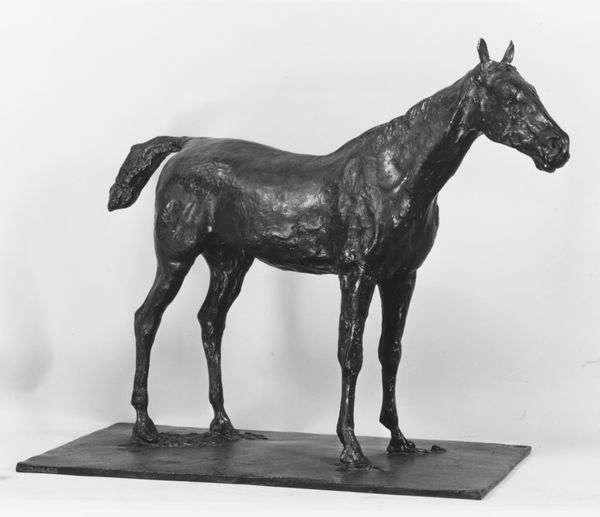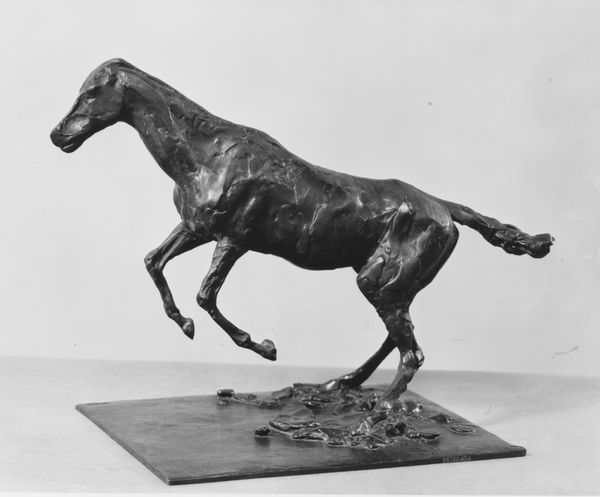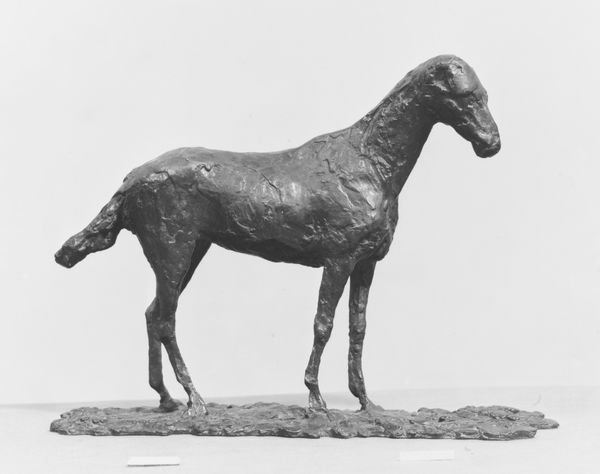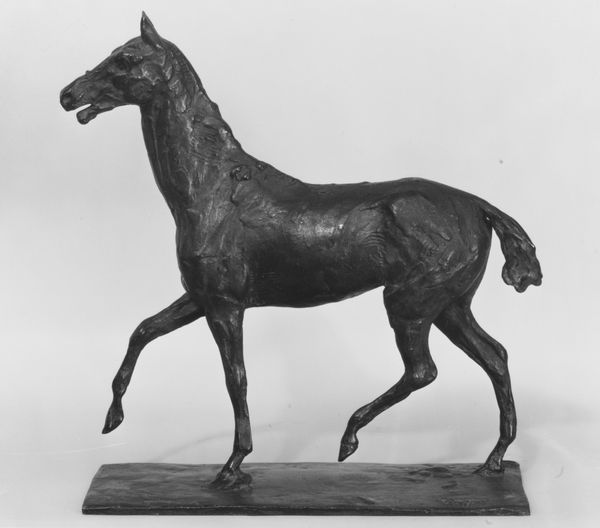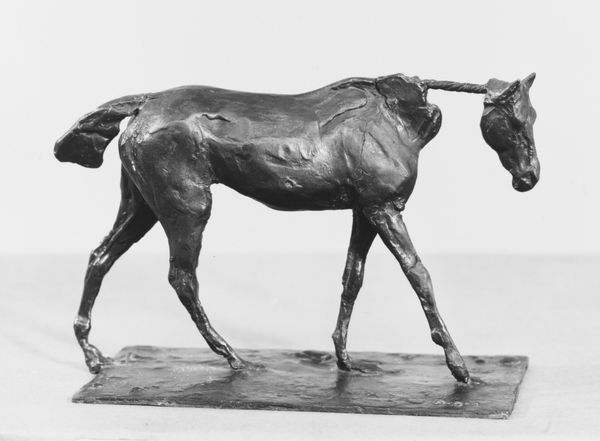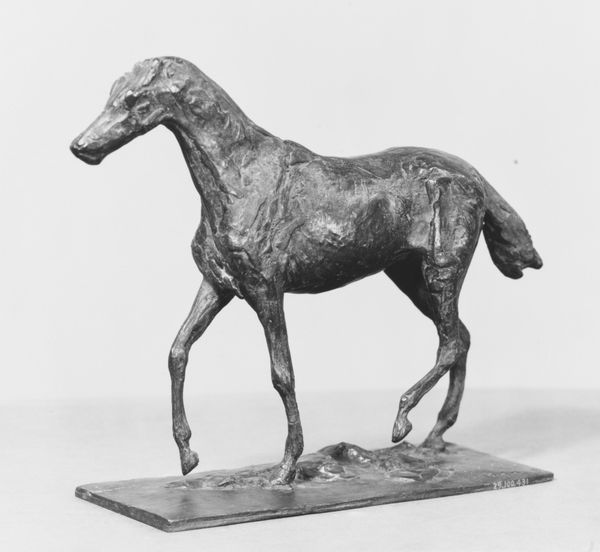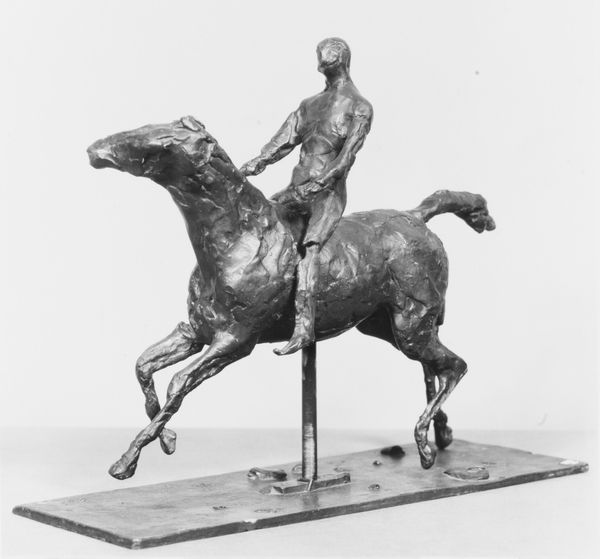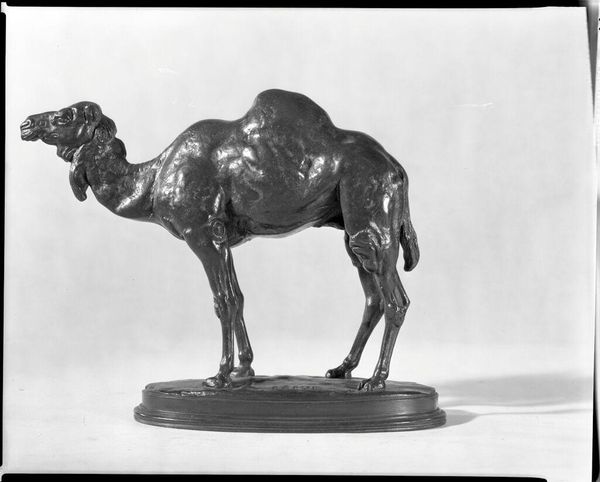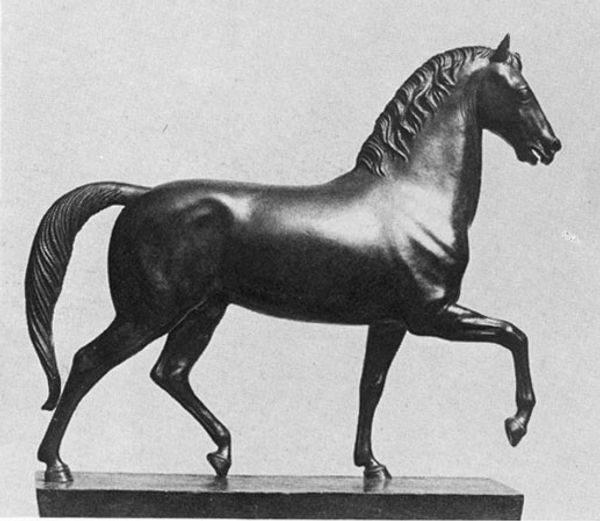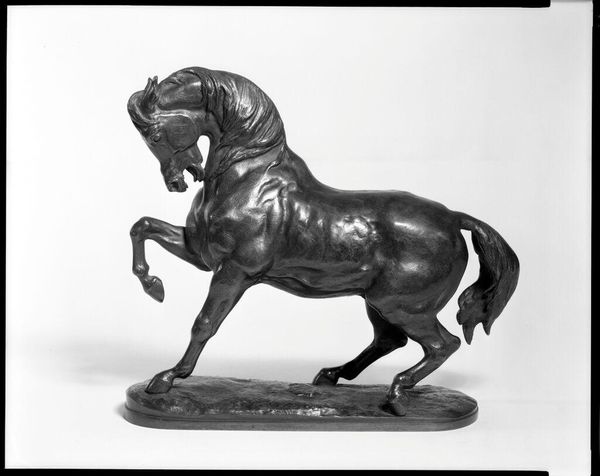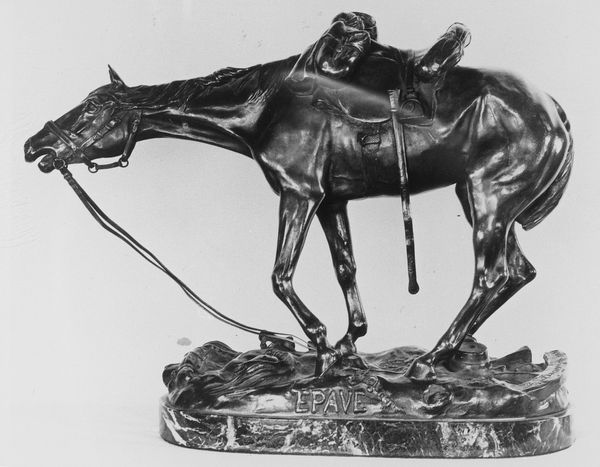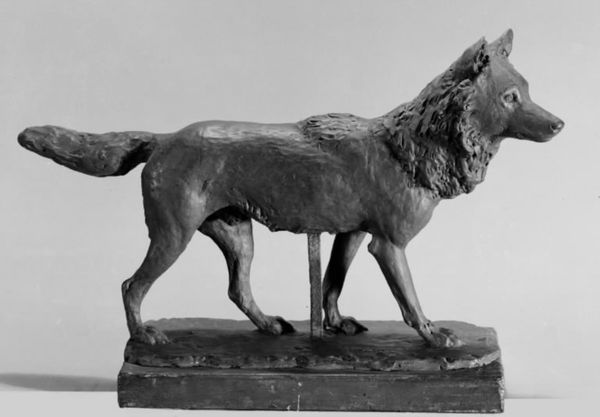
Dimensions: Overall: 12 1/8 x 18 3/8 x 8 1/4in. (30.8 x 46.7 x 21cm)
Copyright: Public Domain
Curator: Before us is Edgar Degas's "Horse Galloping on Right Foot," a bronze sculpture, made sometime between 1887 and 1920. Editor: My immediate reaction is one of tension and restrained power. The horse seems poised mid-stride, a moment of captured energy. Curator: Degas was fascinated by the anatomy and movement of horses, especially those at the racetrack. This piece, I think, embodies a complex commentary on class and leisure. Horse racing at the time was linked with masculine power structures and displays of wealth. Editor: Yes, and the horse itself is an incredibly potent symbol across cultures – of freedom, virility, strength, and, of course, nobility. Its dynamic pose, the almost exaggerated extension of its limbs, speaks to an unbridled spirit, even if rendered in heavy bronze. Do you think that its association with nobility carries a particular social meaning in that context? Curator: Absolutely. Degas uses the Impressionistic style, typically reserved for scenes of light and leisure, to probe deeper into the socio-political realities of the era, revealing hidden hierarchies through his sculptural work. While the horse signifies nobility, it can also, when considered in light of feminist and post-colonial criticism, represent constrained power that serves dominant groups and individuals. Editor: The textured surface almost looks like the horse is emerging from some primordial soup. The level of details speaks volumes about his commitment to both science and art. It highlights the timelessness embedded in a modern approach. I wonder how many contemporary viewers would stop to consider its implicit and explicit gendered context? Curator: It prompts us to consider the representation of power and the complexities within perceived symbols. Degas was certainly interested in observing modern life. What are your thoughts on it now? Editor: I appreciate how Degas manages to capture such kinetic energy in such a still medium. It continues to pose crucial and significant questions about cultural, social, and class dynamics, even today.
Comments
No comments
Be the first to comment and join the conversation on the ultimate creative platform.
